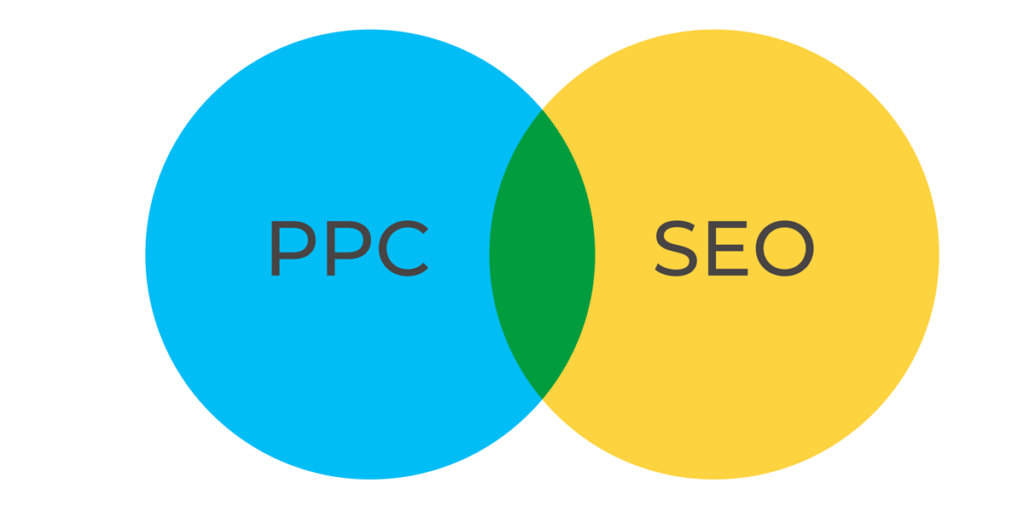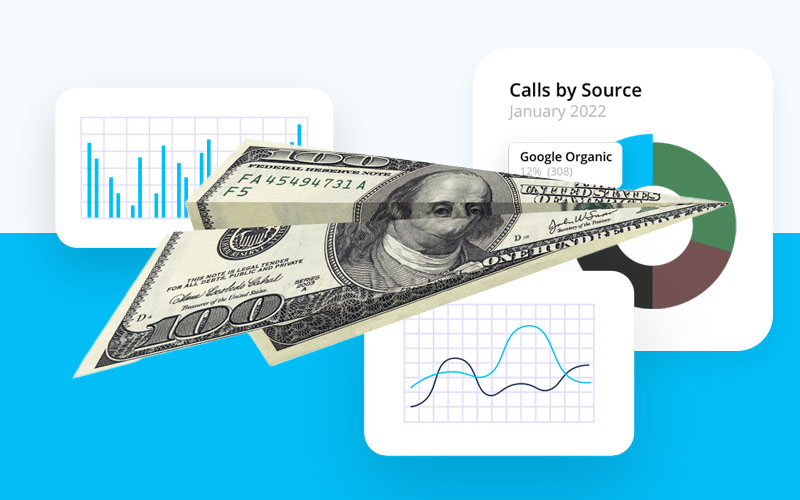Call Tracking for Marketing Directors
Read Time 4 Minutes
Marketing directors wear a lot of hats. From supporting paid ads specialists and lead gen managers to guiding decisions for SEO strategists and content marketers, there’s a lot of ground to cover–and a lot of people to align. Call tracking for marketing directors won’t solve all your problems, but it can be a big help.
Robust call tracking software helps marketing directors align their team and unlock their full potential. Call tracking connects online and offline activity so you get the complete attribution picture and know exactly which ad campaigns generate the best leads.
But that’s not all.
Not only do these tools help you drive the best leads, but AI-powered automation tools also automate your pipeline to close deals faster. Many marketers don’t realize how much a call tracking platform can help make their jobs easier, their team more effective, and stretch their marketing dollars.
When you use a call tracking platform that offers a suite of features, like marketing automation, AI-powered tools, multi-touch attribution options, omnichannel communications, and popular tech stack integrations, you can do more with your budget while generating and converting more leads.
Call Tracking for Complete Attribution
(… and so much more)
As mentioned, call tracking connects offline and online activity for a complete picture of your prospects’ activities. But call tracking does more. It also helps unite your team, departments, and company around the same data and goals while saving you time and money.
And, as a marketing director, you could probably use more of both.
Let’s look at five ways call tracking helps marketing directors run a successful department.
5 Ways Call Tracking Helps Marketing Directors Succeed
1. Gain Full Funnel Insights

Marketing directors work closely with various departments to attract, nurture, and convert the right leads. Great directors rely on data to make strategic decisions to keep the pipeline full of profitable leads. Getting this data can often take a lot of time — even well-resourced teams might have data gaps they can’t fill through existing tools.
What’s more, it’s critical to get the right data. It’s a classic quality-over-quantity situation with marketing data.
Marketers report that they get enough data but they don’t get the right data. In our study, The State of Data-driven Marketing, 41% of marketers reported that despite having a lot of data, they are still unable to tie their marketing efforts directly to revenue.
“I often tell our clients that marketing without call tracking isn’t much different than gambling. If you don’t know what works and what doesn’t, achieving sustainable success in marketing is highly unlikely.”
-John Thornton, CEO of Black Propellor (Read the Case Study)
Many marketing and sales teams suffer from gaps in their attribution data and are making decisions on incomplete data. For most, online activity is pretty easy to track, however, when customers go offline through phone calls or texts, the trail goes cold. Including call tracking in your marketing attribution plan helps marketing directors get all the right data–not just a partial picture.
Getting comprehensive marketing attribution is one of the primary benefits of call tracking for marketing directors.
2. Align Marketing Specialists

Getting everyone in your marketing department (like your content strategist, paid ad specialist, and social media strategist) on the same page can be a battle. But, when everyone is looking at a full picture of all of the data all in one place, alignment is a lot easier.
Marketing team members must be on the same page to achieve–and sustain–success. With insight (directly from your customers and prospects that call tracking and AI tools deliver) everyone knows which ads, keywords, messages, and campaigns drive the most valuable leads and conversions.
Teams can then repeat what’s working in other areas and eliminate what’s not. This maximizes the good results and gets rid of the efforts that waste money.
Additionally, teams like PPC and SEO will find it easier to collaborate and align on projects like powerful SERP domination campaigns. With comprehensive data in all in one easy-to-access dashboard, these teams can find the best strategies to maximize–and dominate–Google search results.
3. Align Marketing and Sales Teams

Once your internal marketing team is aligned, the next step is to align marketing and sales. Misalignment between marketing and sales teams can be detrimental to a company’s brand image and bottom line. It’s essential to invest in sales and marketing alignment to scale and achieve long-term success.
Both marketing and sales benefit from using the same actionable data to drive their strategies and learn more about customers and the sales journey. Some of the information they get includes:
- Which ad campaign drives the most valuable leads?
- PPC and SEO teams know which ads and keywords are working the best.
- Sales knows what customers are searching for online and be prepared to offer them additional, relevant information quickly
- What products or services featured in campaigns are getting attention and driving conversions?
- Content strategists know which products need plenty of supporting collateral available
- Sales knows exactly what products/services have been viewed and where they are on the buyer’s journey so they can respond thoughtfully to customer needs
- Where and when prospects are on social media channels the most?
- Social media specialists know which channels to prioritize (particularly helpful for smaller social media teams)
- Sales agents know exactly where to try to connect with prospects and customers to further nurture relationships
- What keywords are being searched before they connect with your brand?
- SEO strategists know which pieces of content to fine-tune and optimize at each stage of the journey to drive more traffic
- Sales gains a better understanding of what your customers want and how your product/service relates to your buyer
When you see full-funnel attribution, both teams will know exactly what’s working. Not only does this help sales shorten the sales cycle for current prospects in the funnel, but the first-hand insight can also reveal buyers’ patterns, habits, and behaviors which in turn can be used by marketing to fine-tune strategies and keep a competitive edge.
This also closes the loop for marketing so they know which leads are good, which are the best (and how to replicate more of those), and which leads are dead ends. They can then maximize what’s driving the best leads. When sales uses activity scoring to score the leads and marketers make strategic decisions on that information, both teams are seamlessly aligned.
According to HubSpot, when your sales and marketing teams are aligned, organizations experience a 38% increase in sales win rates. When these teams are aligned you:
- Drive more high-value leads
- Improve speed to lead time
- Close more deals
- Improve customer satisfaction
When you use call tracking for lead generation like this, you’ll see revenue climb while consistently building–and retaining–your customer base, both of which are keys to success.
4. Improve Efficiency and Save Money

Efficiency and saving money are both essential for success in today’s competitive–and sometimes volatile–market. When call tracking is used as part of a comprehensive strategy by marketing directors, you’ll do both. When you’re using call tracking for lead generation, you’ll see improvements in:
- Return-on-ad-spend (ROAS)
- Return-on-investment (ROI)
- Cost-per-lead (CPL)
- Cost-per-acquisition (CPA)
AI-powered tools that are part of some call tracking platforms like CTM let you automate certain processes. This frees up time for your team so they can focus on higher-level tasks. Marketing automation tools used in conjunction with call tracking for lead generation help to improve efficiency by automating tasks like:
- Text reminders and follow-ups
- Appointment scheduling
- Summarize conversations
- Trigger next steps
- Route callers to the best-suited agent
- Execute and screen callbacks in priority order
Savvy marketing directors always want to be doing more with less. Call tracking, used in conjunction with other tools, enables you to do just that. With low start-up costs, marketing directors can invest in software that will not only improve performance but also integrate with their current tech stack.
This helps improve efficiency even more. Directors and team members won’t have to spend extra time looking at different platforms for data and then taking the time to compile it into understandable reports (something most marketers would rather not have to do).
Instead, all your data, from all your software platforms, is in one easy-to-view, easy-to-understand place where you can assess and compare the data and create reports. This saves time for marketing directors and other team members.
Did you know CTM offers no-code and low-code integrations developers love? We make it easy to connect your tech stack to CTM so you can finally have all of your data in one, central place.
5. Unlock Hidden Insights

Being able to get inside your customer’s head is vital to both sales and marketing success. When you have an idea of what your prospects and customers are thinking about and doing concerning your brand, you’re able to better serve them a winning experience.
Call tracking provides insight into the entire buyer’s journey so your team still gets the vital customer insights they need even for offline touchpoints. When you use it in conjunction with AI-powered marketing automation tools and robust integrations, relevant follow-ups can be triggered that are highly personalized to each prospect and customer.
Tools like recordings, transcriptions, keyword spotting, and sentiment analysis let your teams know exactly what your customers are saying and doing. AI-powered marketing automation tools turn these actionable insights into next steps–automatically.
This is something most of your competitors aren’t doing yet and can give you an advantage. Data from our survey found that only 17% of marketers surveyed planned to invest in conversation analytics in 2023.
Teams with a deeper understanding of their customers can provide a better customer experience to drive revenue and your brand’s reputation. For marketing directors with a lot on their plate, it’s just one more way to improve efficiency and drive your company’s bottom line.
Marketing directors can use call tracking software to help them drive and manage leads, align departments to optimize performance, fine-tune PPC and SEO efforts, and make data-backed decisions.–in addition to many other benefits.
One of the most compelling benefits of call tracking software is its ability to help marketing directors do more with less. By automating many of the tasks associated with lead management and tracking, marketers can free up time and resources to focus on other important initiatives. This can help to improve overall efficiency and productivity, and ultimately drive the company’s bottom line.
To learn more about how call tracking software can benefit marketing directors, check out this case study with our longtime customer, Black Propellor. It provides real-world examples of how call tracking helped them improve their marketing efforts and increase customer retention by 70%.